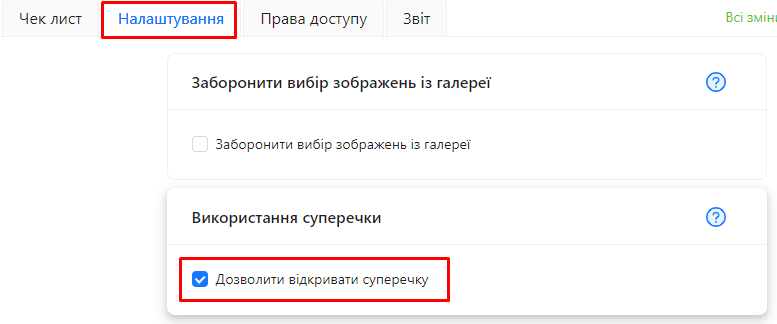Dispute Usage
"Dispute Usage" is an audit template setting that allows initiating a dispute process for specific questions after completing an audit. A dispute is a mechanism to indicate that the auditor may be incorrect, allowing disagreement with the audit results. During a dispute, users can provide textual explanations and photos, which the auditor can review to either accept or reject the dispute.
For a detailed description of disputes, refer to the article Purpose of Dispute.

How to Enable Dispute Usage
-
Navigate to the audit template settings:
- Log in to the system and open the required audit template.
- Click on the "Settings" tab.
-
Locate the "Dispute Usage" option:
-
Enable the setting:
- Check the box next to this setting to activate it.
-
Save the changes:
- Once the changes are made, the audit template will be saved automatically.
How Disputes Work During an Audit
-
Initiating a Dispute:
- After completing an audit, if the user disagrees with the auditor's response to certain questions, they can initiate a dispute.
- To do this, they click the "Dispute" button next to the relevant question.
-
Providing Explanations and Evidence:
- The user can add textual explanations explaining why they disagree with the auditor's assessment.
- They can also upload photos or other documents to support their position.
-
Auditor Review of the Dispute:
- The auditor receives a notification about the initiated dispute.
- They review the provided explanations and evidence.
- After analysis, the auditor can either accept the dispute (adjust the assessment) or reject it.
-
Outcome of the Dispute:
- If the dispute is accepted, the response to the question and potentially the overall audit result are adjusted.
- If the dispute is rejected, the original results remain unchanged.
Why This Is Useful
-
Improving Objectivity: Disputes help ensure more objective assessments by incorporating additional evidence and explanations.
-
Facilitating Communication: It serves as a tool for effective communication between the auditor and the audited party or other stakeholders.
-
Conflict Resolution: Helps resolve potential disagreements in evaluations and ensures a fair audit outcome.